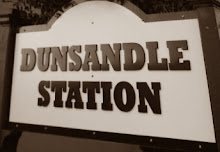Loughrea Railway
THE LOUGHREA and Attymon light railway had a short life. When in July, 1846 Parliament had sanctioned a railway line to Galway, there was some discussion about the branch line to Limerick. Although it was first suggested that the branch line go through Loughrea, it was later decided to go through Craughwell. From then on Loughrea, displeased at being bypassed, made various efforts to secure a train service.
DEPUTATIONS
On October 28th, 1858 a Loughrea deputation led by Lord Dunkellin waited without result on the Chairman of the Board of the Midland and Great Western Railway. When Bishop Thomas Duggan came to Loughrea in 1871, he was to be a tenasious fighter for a Loughrea line, again and again demanding a train service. In 1879 he led a high-powered delegation which included Lord Dunsandle and Mr. Smith of Masonbrook. Their pleas were successful as enabling legislation, the Loughrea Railway Act was passed.
Two more years of Loughrea pressure eventually led to the Loughrea and Attymon Light Railway Company being incorporated. It was neccessary to get support of local landowners to make the venture a success. Prominent backers were R. A. Nugent, J.P.Rockfield; J.Archer Daly J.P., Raford; W. Daly, J.P. Dunsandle; J. Smyth, J.P. Loughrea; J.J. Egan, Loughrea; M. Sweeney, T.C. Loughrea and T.W. Mills, J.P., a Loughrea Banker.
14,000 £5 shares were sold and on May 24th, 1889 work began. Killimordaly bog caused a lot of trouble and delayed the laying down of the line. The line was the last to its kind to be laid in Ireland.
In October, 1890, the line was passed for opening, which ceremony took place on 1st December, 1890. Carrowkeel was renamed Dunsandle Station.
ACTIVITY
When a large stone was placed on the line, political motives were suspected. Times were troubled as in 1889 a policeman has been shot in Craughwell and Lord Dunsandle's solicitor had been shot between Craughwell and Loughrea.
Among those who used Loughrea was Lady Gregory when she was despatching wood from Coole. The building of Loughrea Cathedral at the turn of the century was facilitated by the local railway and it in turn got much business in the transport of materials.
When Dr. O'Dea was consecrated bishop in 1903, he had special trains come from Dublin and Galway.
MOYODE
During the unsettled period of 1916 whe Moyode Castle was seized by the insurgents, a millitary train went from Athenry to Dunsandle. It was decided not to attack as the rebels had gone to Limepark. The train continued on to Loughrea. the ownership of the line was changed by the Railways Act of July 23rd, 1924 by which it was amalgamated with the major line on January 1st, 1925. Since then much money was lost. In 1946, £6,191 was lost. Iit was hoped that the Tynagh Mines would improve matters, yet in 1962 Mr. C. S. Andrews of CIE threatened closure. This led to agitation. the increasing use by farmers of fertilisers meant increased business for the company into Loughrea. The making of the film "Alfred The Great" at Roxboro in 1968 also generated business, as much of the equipment was brought in by rail.
THE END
Closure was again threarened in 1971. The carriage shed was dismantled and sold locally for £10. On November 3rd, 1975 the line finally closed.


No comments:
Post a Comment